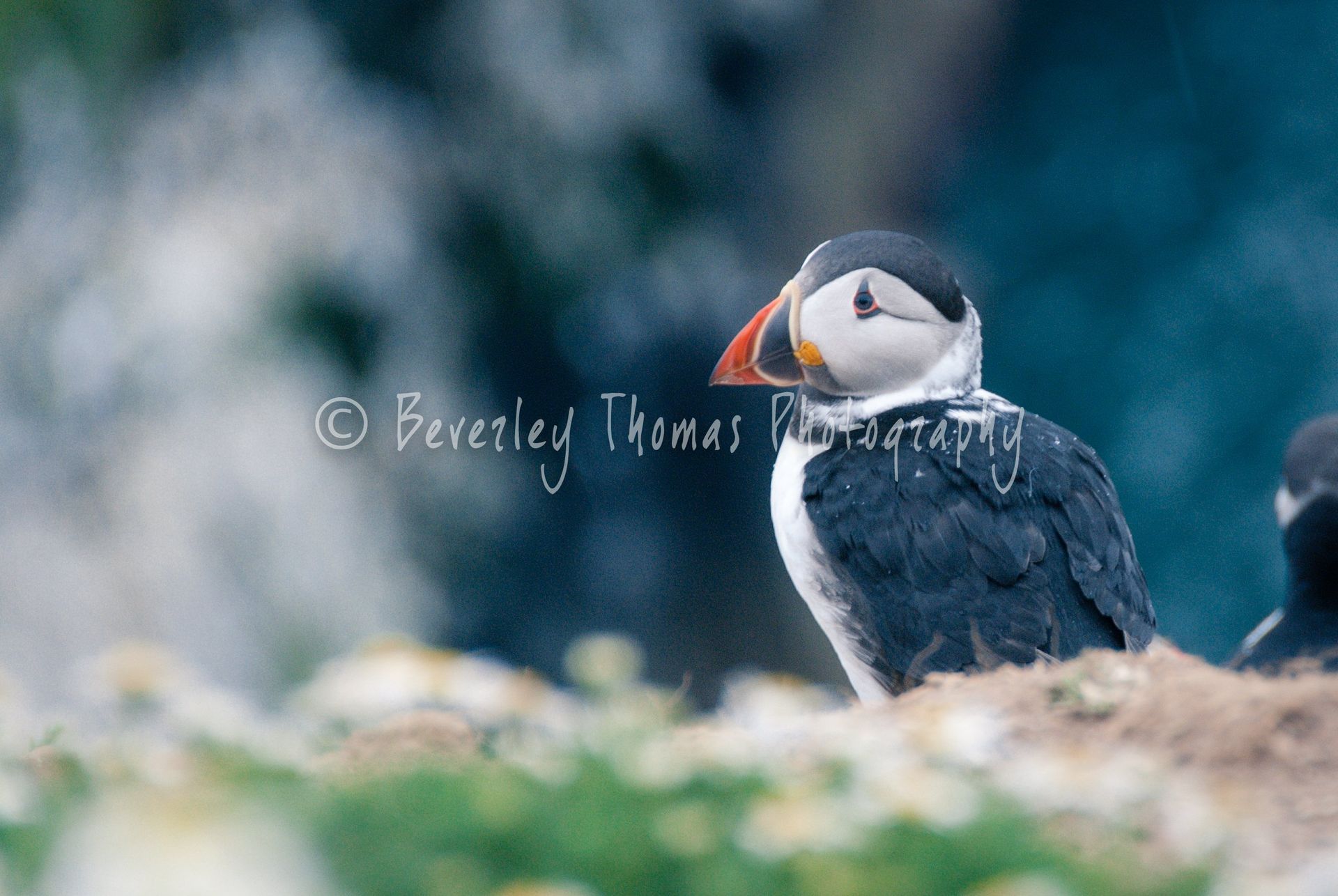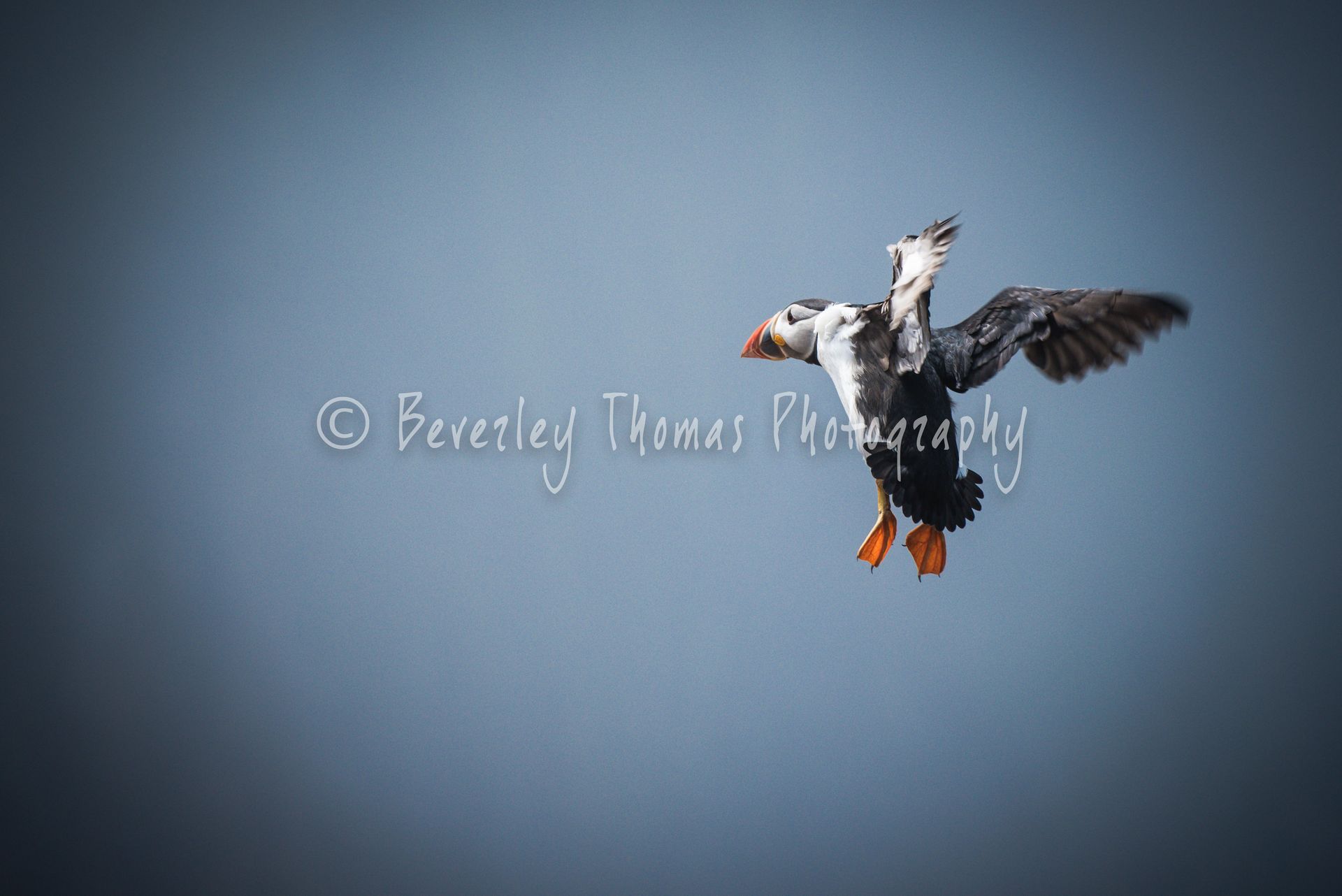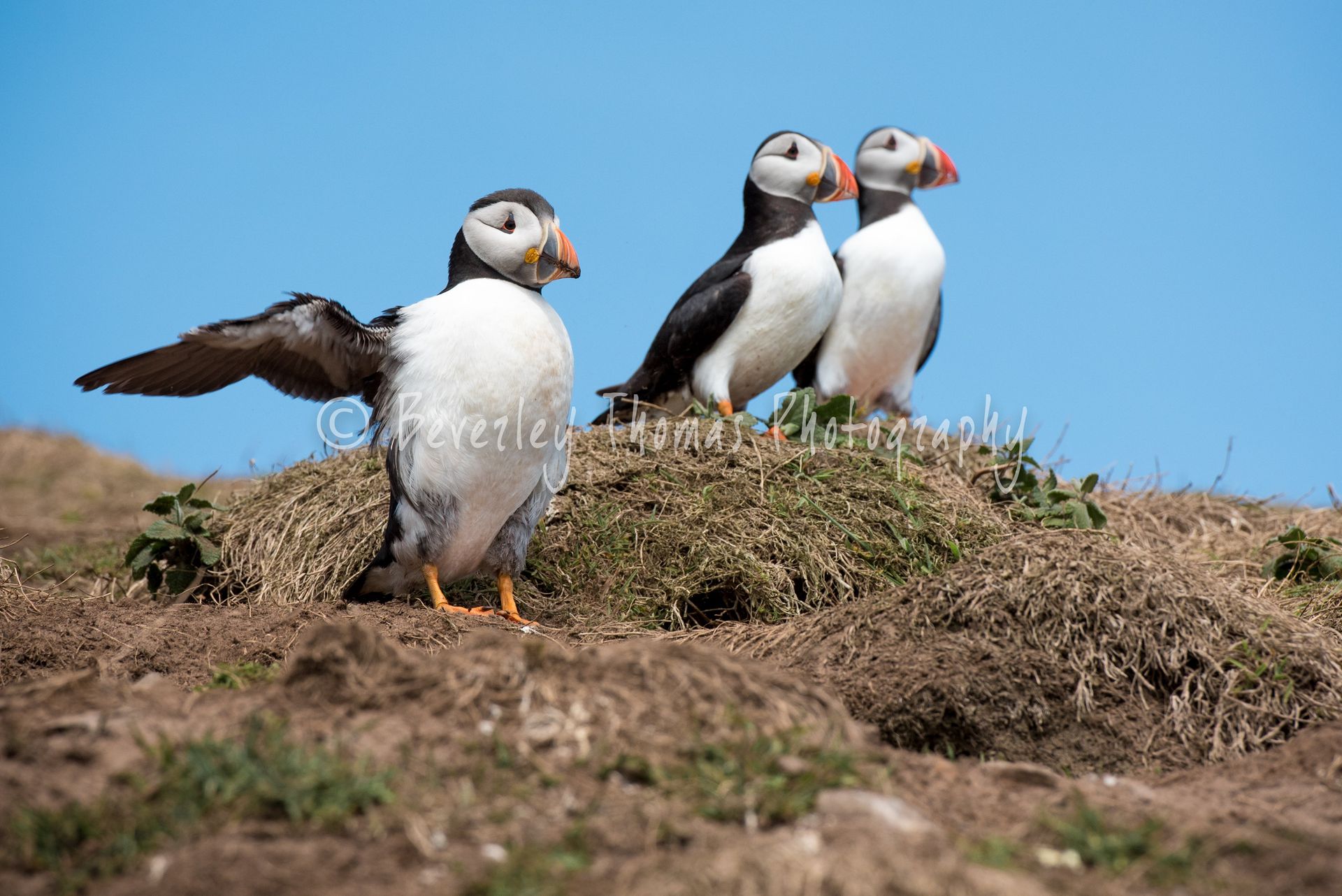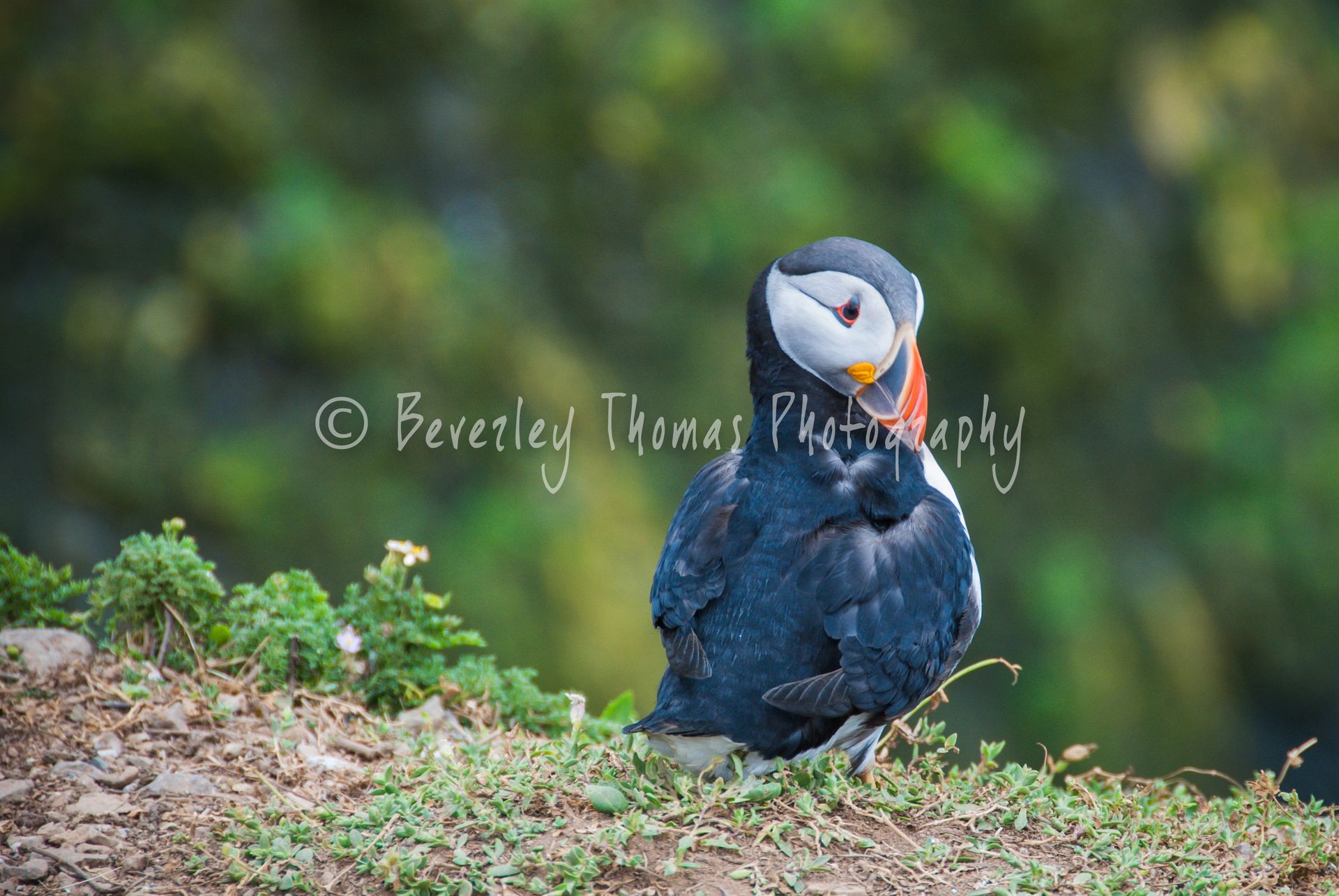Skomer Island
The beautiful Island of Skomer 18/05/17
My photography career involves mostly photographing people so I do not describe myself as a wildlife photographer, although I do love wildlife and as a hobby I enjoy photographing it whenever I get the opportunity, this week I was fortunate to visit this beautiful Island. Skomer is an island off the coast of Pembrokeshire in West Wales. It is well known for its wildlife, around half the world's population of Manx shearwaters nest on the island, along with the Atlantic puffin colony. A short boat trip is all it takes to reach this fascinating world of birds and bluebells. Departing from the boat you have 87 steep steps to climb before being greeted by the island ranger and puffins flying overhead.
Skomer is home to the Atlantic puffin, and I have to say, one of my favourite birds.

It is late May and spring is certainly in bloom on Skomer. This beautiful island is covered in a carpet of bluebells. One of the reasons why Skomer bluebells look so spectacular is because of the unusual ecosystem. Bluebells are generally found in woodland areas, and emerge so spectacularly in early spring as they have evolved to complete their life cycle before the trees have come into leaf and the light levels drop. As you might see from this image, Skomer lacks trees so bluebells have adapted to grow amongst the bracken.

Like many seabirds, the Atlantic puffin spends most of the year far from land in the open ocean and only visits coastal areas to breed. It is a sociable bird and it usually breeds in large colonies which is evident on Skomer especially at the place known as the Wick. The Wick is clearly the most popular home to these fascinating birds and visitors are asked to remain respectful and walk in set areas to not disturb the puffins habitat, as Puffins waddle, march, scurry, hop, walk right past your feet.

The Atlantic puffin diet consists almost entirely of fish, occasionally they eats shrimps, other crustaceans, molluscs and polychaete worms, especially in more coastal waters. It has been estimated that an adult bird needs to eat about forty of these per day—sand eels, herrings, sprats and capelin being the most often consumed. It fishes by sight and can swallow small fish while submerged, but larger specimens are brought to the surface. It can catch several small fish in one dive, holding the first ones in place in its beak with its muscular, grooved tongue while it catches others.

When it takes off, the Atlantic puffin patters across the surface of the water while vigorously flapping its wings, before launching itself into the air. The size of the wing is a compromise between its uses above and below water and its surface area is small relative to the bird's weight. To maintain flight, the wings need to beat very rapidly at a rate of several times each second. The bird's flight is direct and low over the surface of the water and it can travel at 50 miles per hour making it quite hard to capture on camera. Landing is awkward, it either crashes into a wave crest or, in calmer water, does a belly flop. While at sea, the Atlantic puffin has its annual moult. Land birds mostly lose their primaries one pair at a time to enable them still to be able to fly, but the puffin sheds all its primaries at one time and dispenses with flight entirely for a month or two. The moult usually takes place between January and March but young birds may lose their feathers a little later in the year.

In the spring, mature birds return to land, usually to the colony at which they were hatched. Early arrivals take control of the best locations, the most desirable nesting sites being the densely packed burrows on grassy slopes just above the cliff edge where take-off is most easily accomplished. Later arrivals at the colony may find that all the best nesting sites have already been taken and be pushed towards the periphery where they are in greater danger of predation. They also spend time standing by their burrow entrances and interacting with passing birds. Dominance is shown by an upright stance, with fluffed chest feathers and cocked tail, an exaggerated slow walk, head jerking and gaping.

Submissive birds lower their head and hold their body horizontal and scurry past dominant individuals, nevertheless they seem to keep themselves busy with no animosity considering they live so close to one another. These beautiful birds are a delight to photograph, wether they are shy or dominant, they certainly all have individual characters.

Breeding colonies of Atlantic puffins provide an interesting spectacle for both bird watchers and tourists. For example, thousands of puffins nest each year on the island and visitors can visit them via tour boats which operate during the summer months. Skomer Island certainly looks after these little birds with care and dedication. Rangers and volunteers help keep a log of all the birds. They are protected and respected enabling people like myself and wildlife enthusiasts to enjoy and witness this truly perfect sight, and for a moment become part of their world.
Bev
for more information on Skomer Island http://www.pembrokeshire-islands.co.uk/islands/skomer/






